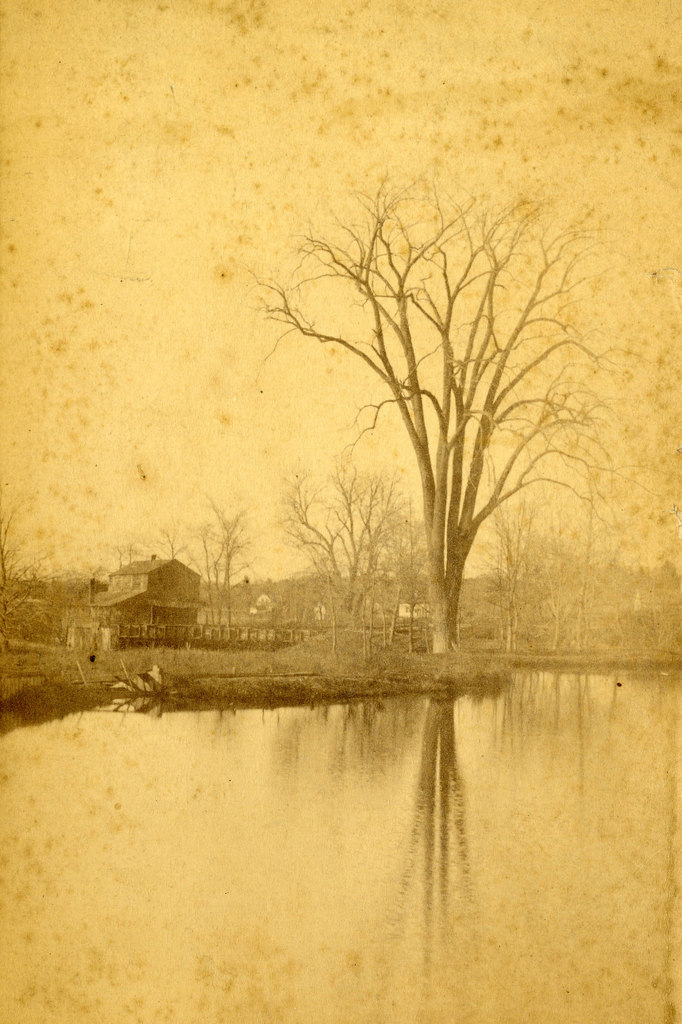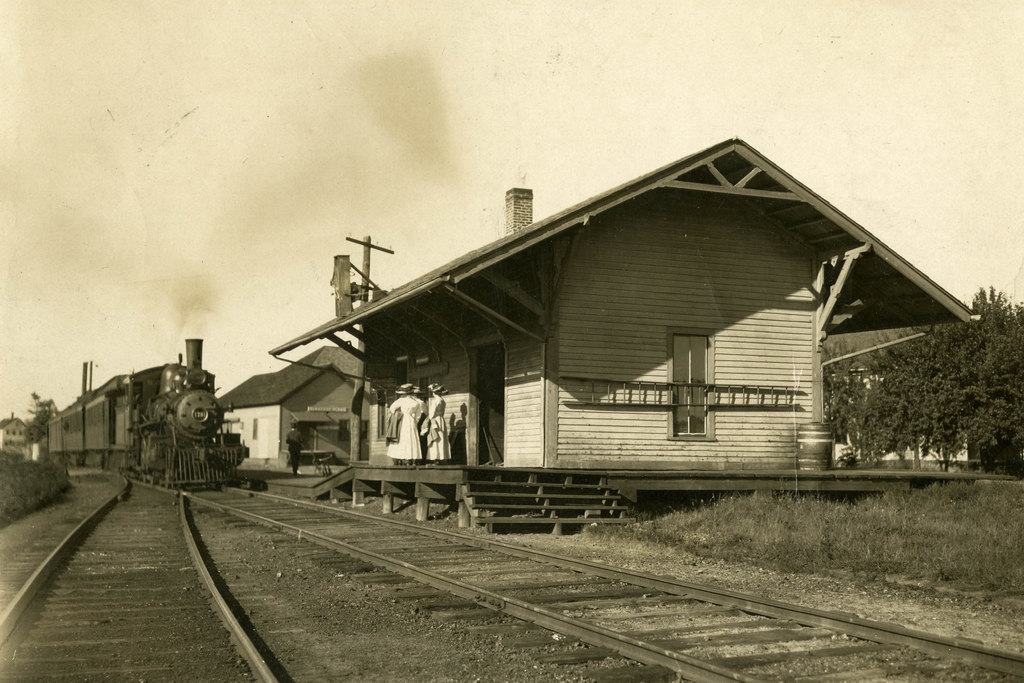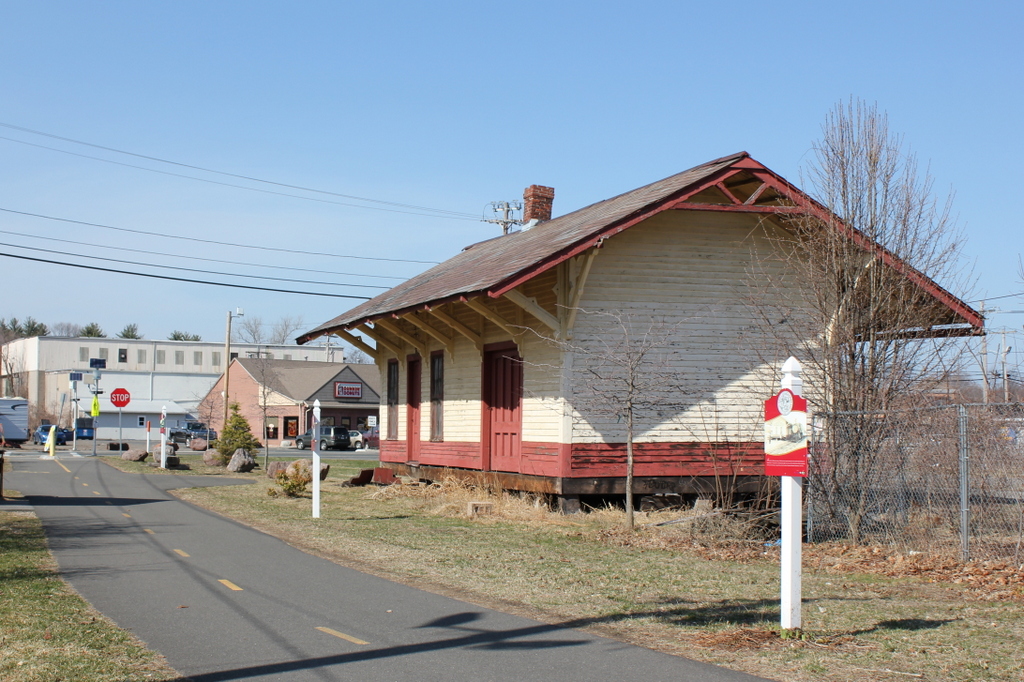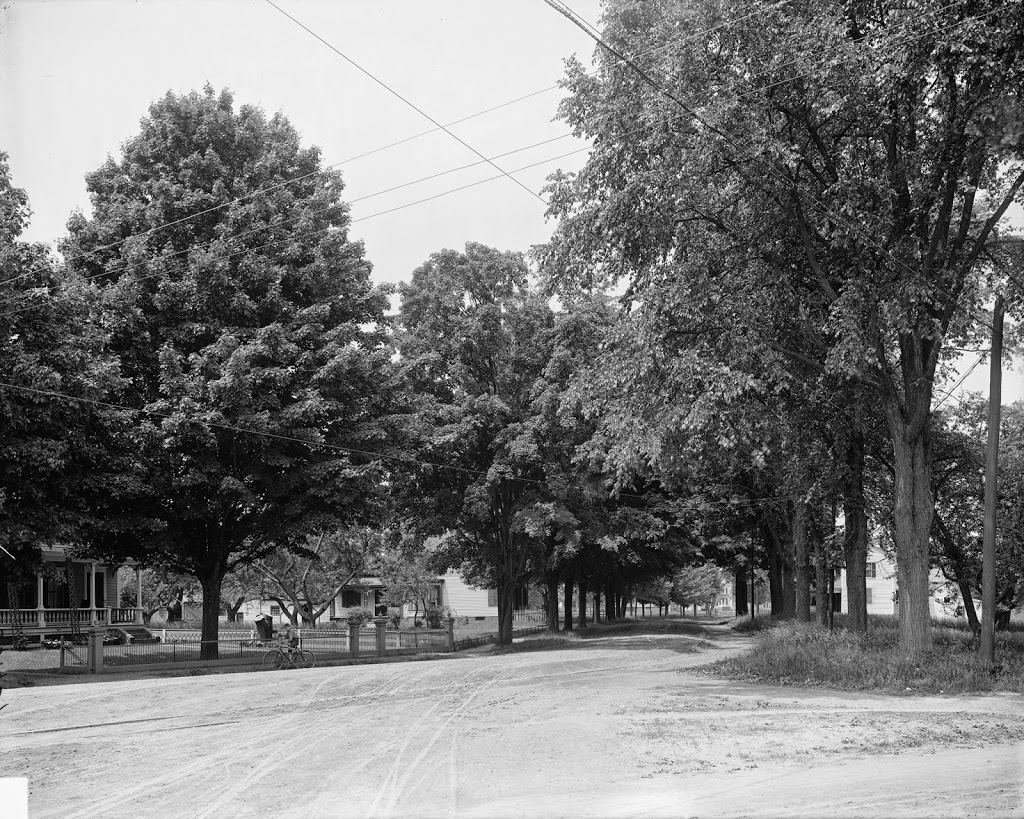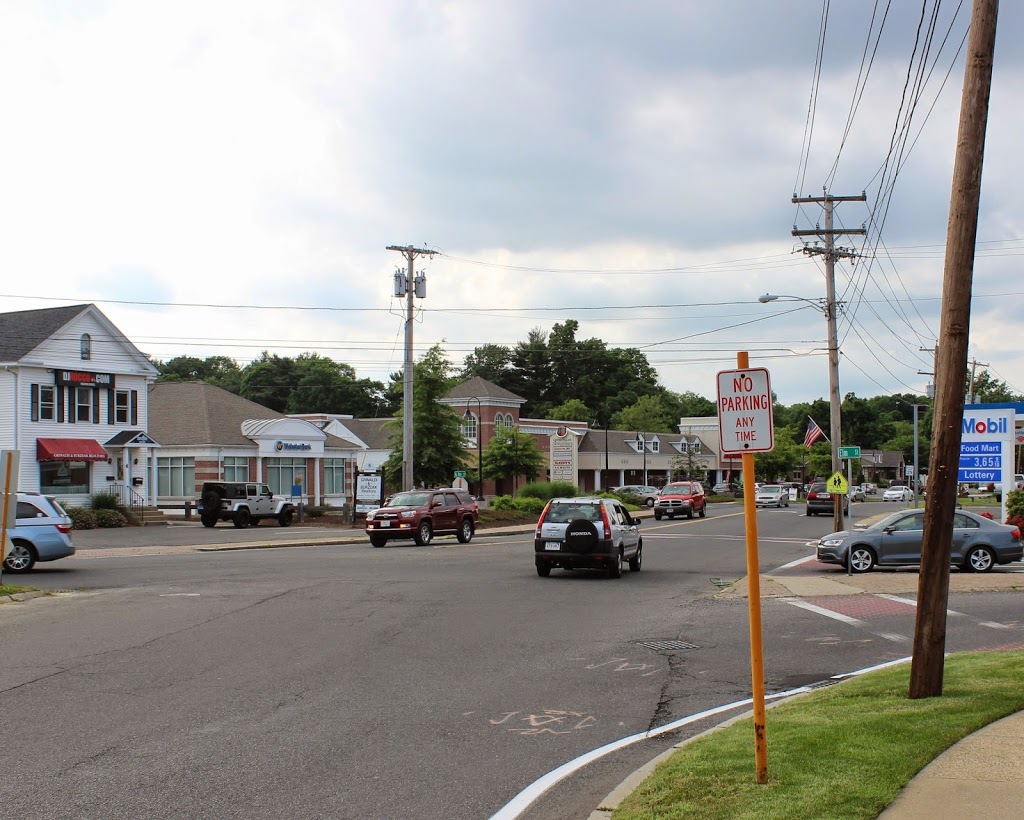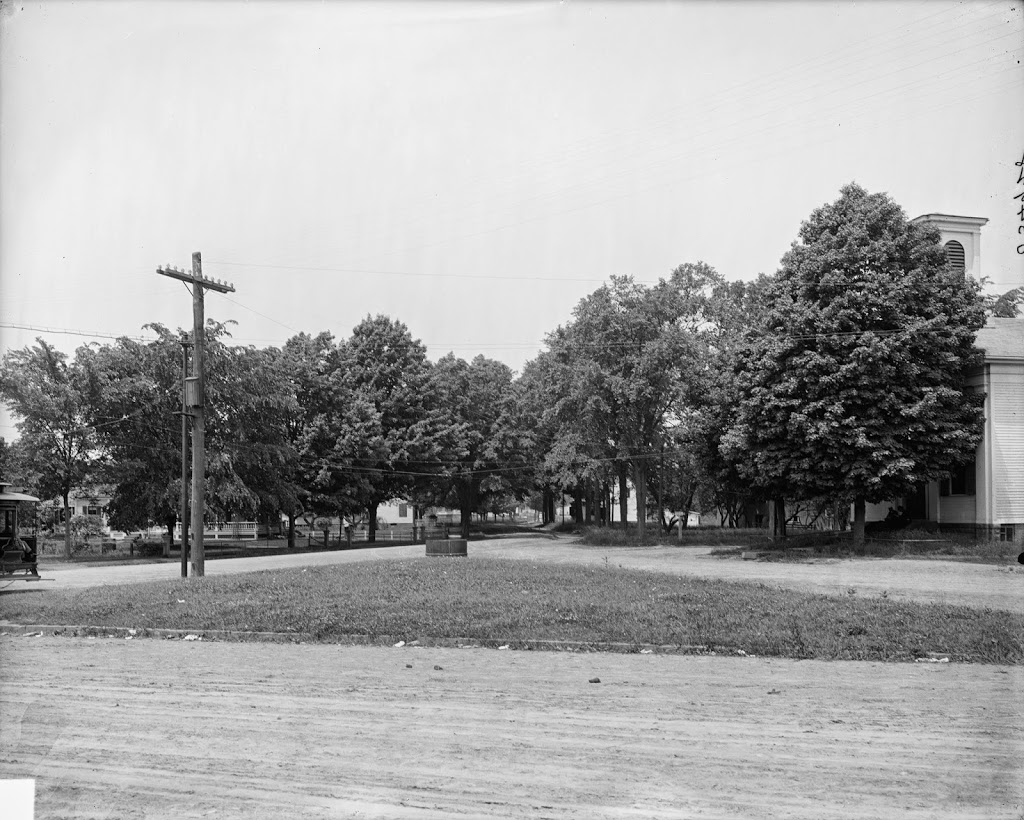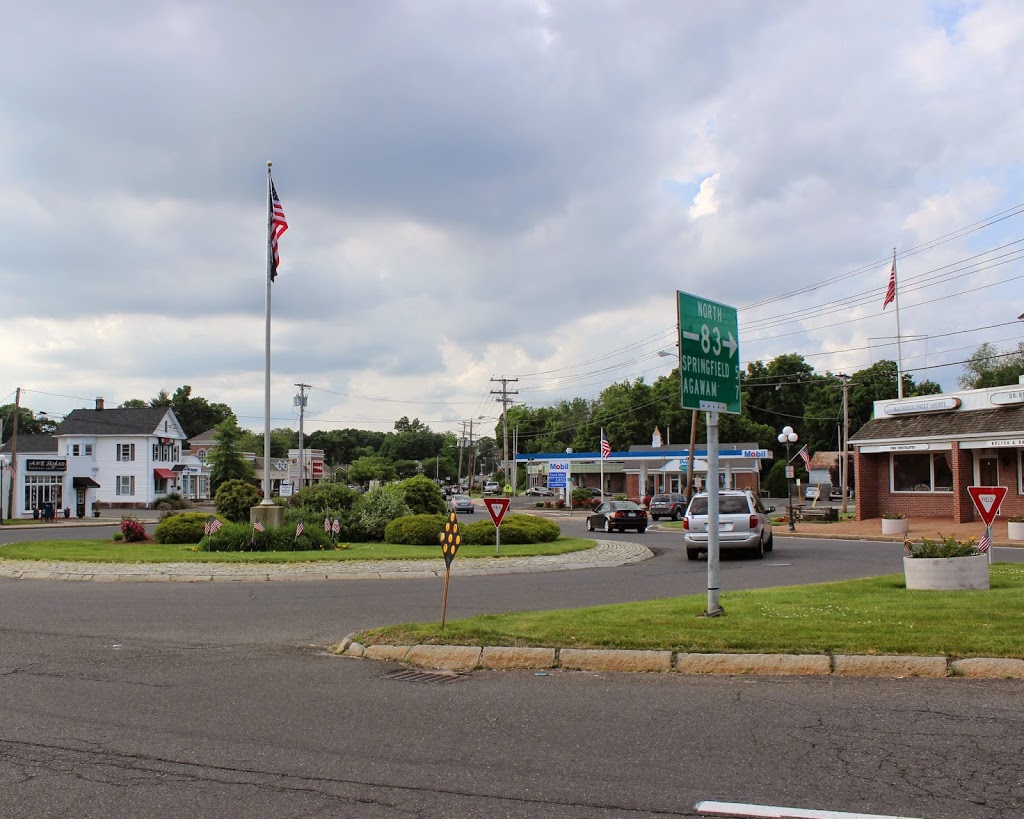The Bodurtha Saw Mill, seen from Westwood Avenue in East Longmeadow in 1887. Photo courtesy of the East Longmeadow Historical Commission.
The location in 2015:
The town of East Longmeadow was never much of an industrial center, in part because it lacked major rivers to power factories. The Pecousic Brook, seen here, is the only stream of any significance near the town center, and while it wasn’t suitable for large-scale industry, it did power several small mills, including the Bodurtha Saw Mill. The mill was built in 1820 as a grist mill, where local farmers had corn, wheat, and oats ground into flour. Later on, it was used as a sawmill, with several owners including Henry Bodurtha, for whom it is named. It burned in 1906, and today there doesn’t seem to be any evidence of either the mill or the reservoir that was once here.

